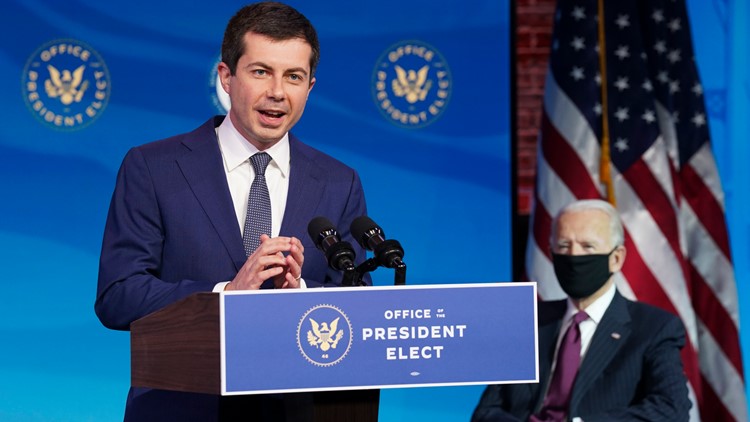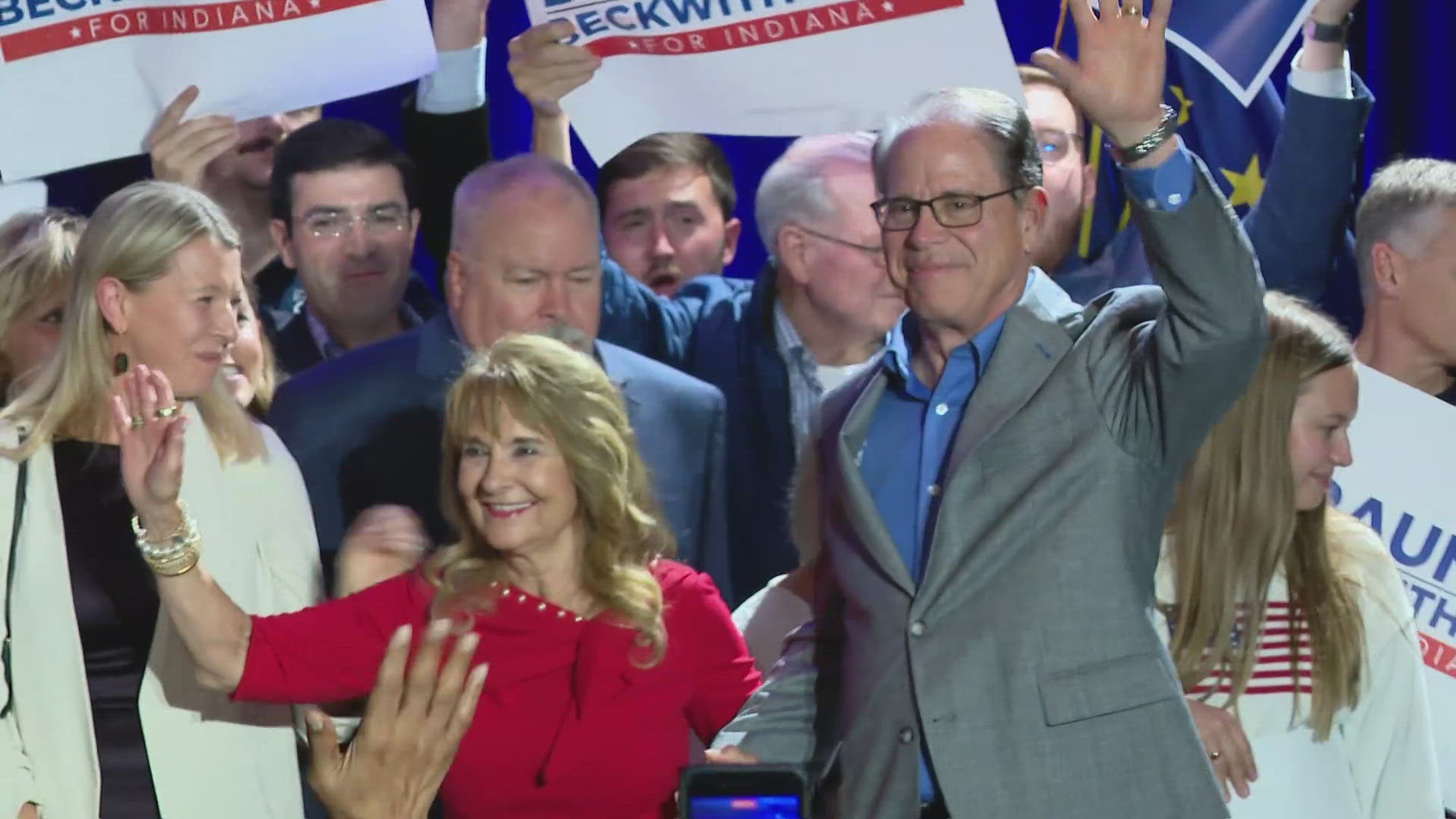INDIANAPOLIS — As the Democratic presidential race wound down just as the pandemic was gearing up, there was no secret that Joe Biden had a lot of respect and affection for Pete Buttigieg.
When the former South Bend mayor endorsed Biden in Dallas, the now president-elect said that Buttigieg reminded him of his late son, Delaware Attorney General Beau Biden. "Like Beau, he has a backbone like a ramrod. I really mean this. I think about it."
The worst kept secret in American politics is that if Biden defeated President Trump, he would select Buttigieg for his cabinet. Over the past few weeks, Mayor Pete's name was floated out as a potential United Nations ambassador, the head of Veteran's Administration, or as envoy to Beijing. His supporters preferred a conspicuous posting that would allow him to burnish his policy chops and his credibility with the Black voters that eluded him during his meteoric presidential run.
On Tuesday, the word was that Biden would nominate 38-year-old Buttigieg to head the U.S. Department of Transportation. And that is the perfect post for the first Millennial to be nominated for a presidential cabinet.
Some may view DOT as a backwater for a man who aspires to be president. But I look to history and an appointment President William McKinley made in 1897, which was to install Theodore Roosevelt as assistant secretary of the Navy. That's not a posting that has been a breeding ground for future presidents.
But for Teddy Roosevelt, serving under the lackadaisical Navy Secretary John D. Long, it was an extraordinary opportunity. Given a free rein, Roosevelt began rebuilding the Navy into what would be in less than a decade a projection of power at the advent of the first American Century. TR refitted older ships, added dry docks and commenced the building of a new set of heavy battleships. By the time Roosevelt became president after McKinley's assassination in 1901, what became known as the "Great White Fleet" was sent across the globe to put the fading powers on notice that America's time of dominance was coming.


Introducing Buttigieg on Wednesday, Biden said transportation is at “the intersection of some of our most ambitious plans to build back better,” to build more climate-resilient communities while adding that America “can own” the emerging market for electric vehicles.
Buttigieg recognized the historic context of where he’s been and where he’s going. “My hometown of South Bend, Indiana was built by the power of American transportation,” he began. “From trade along the river at the bend that gives the city its name, to the rail lines which connected us to the rest of the country when we were considered the west, to livelihoods created by the good paying union jobs at ... Bendix and Studebaker. And now climate and infrastructure innovation are bringing my community into the 21st Century.”
“As a mayor fighting its way out of the Great Recession, infrastructure was at the heart of our vision,” he said. “We reimagined how people and vehicles would move through our city unlocking new economic vibrancy through our urban core.”
During his two terms as mayor, he worked with Gov. Eric Holcomb to double-track the South Shore, and added bicycle mobility and electric vehicle infrastructure.
“I faced a constant battle with that natural enemy of all mayors, the pothole,” Buttigieg continued. “At its best, transportation makes the American dream possible, getting people and jobs where they need to be, directly and indirectly creating good-paying jobs. At its worst, misguided policies and missed opportunities can reinforce racial, economic and environmental injustice, dividing or isolating neighborhoods, undermining government’s basic goal to empower everyone to thrive.
“Americans have given this administration to build back better,” Buttigieg concluded. “And step one is to build. The U.S. should lead the way.”
In January 2019, candidate Buttigieg released his infrastructure plan “Building for the 21st Century.”
Jonathan French, writing for Medium.com, observed, “Most media outlets pointed to the overall highlights, but what separates his plan from his competition is the level of detail, specifically the detail of what is proposed for highways and bridges. I highly recommend that everyone read the entire plan, but the key components that I appreciate the most as a transportation professional are as follows: Highway Trust Fund funding reform; cutting 50% of the backlog of critical road repairs by 2030; repairing 50% of structurally deficient bridges by 2030; and committing to Vision Zero” or an end to traffic fatalities.
According to his plan, Buttigieg would “require his DOT to propose a new and sustainable user fee-based system, such as a vehicle-miles-traveled fee with appropriate privacy protections that is already being piloted by states and can potentially replace the gas tax.”
Politics and history reward those leaders who build things, whether it was President Lincoln who saved the Union while uniting a fledgling powerhouse with coast-to-coast railroads and land grant universities, to President Franklin D. Roosevelt’s ignition of the Arsenal of Democracy as World War II loomed, or Presidents Eisenhower and Kennedy who forged the interstate highway system and the ability to put a man on the moon.
American infrastructure is in dire need of attention and investment. President-elect Biden is betting that Mayor Pete can find a way.
The columnist is publisher of Howey Politics Indiana at www.howeypolitics.com. Find Howey on Facebook and Twitter @hwypol.



